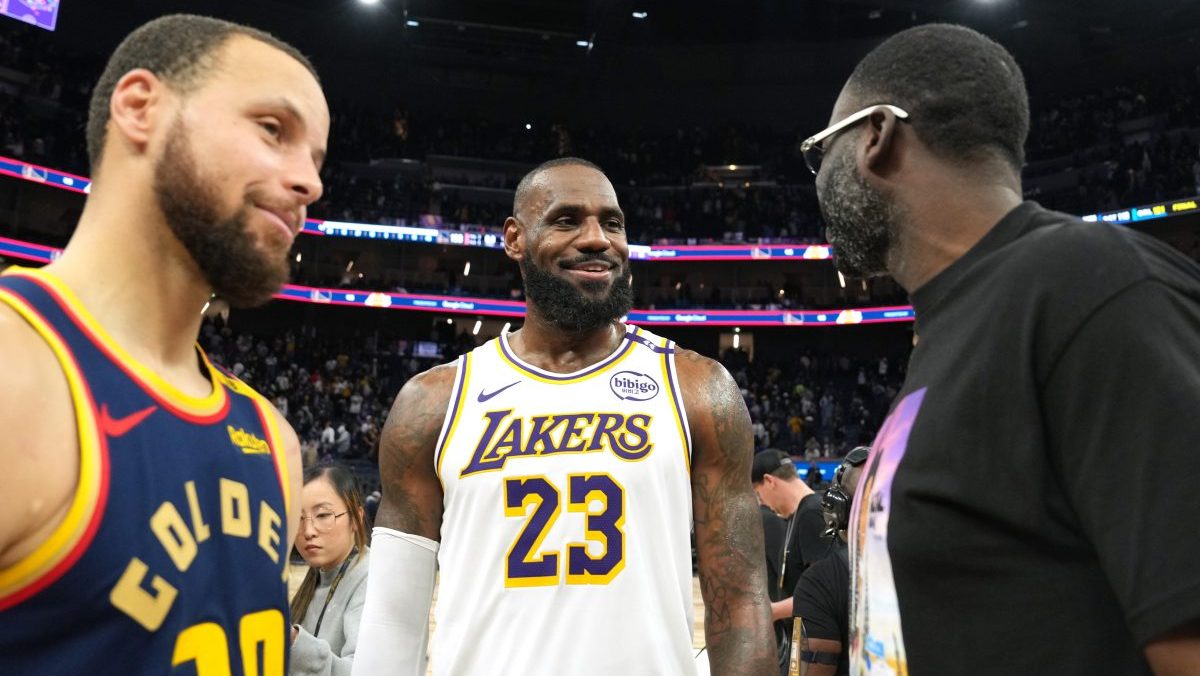Editor's note: Grant Liffmann (@grantliffmann) is the co-host of Warriors Outsiders, which airs on NBC Sports Bay Area 90 minutes before each home game and 60 minutes after every game. Each week, Grant will drop his Outsider Observation on the state of the Dubs.
Since the Warriors' historic meltdown in Game 2, there has been a tempered excitement from the Dubs fan base. On one hand, the Warriors are one win away from defeating the Clippers and moving on to the second round. On the other hand, a red-hot Rockets team likely awaits and the Warriors have proven themselves to be consistent underachievers throughout the regular season against top-tier opponents.
The Game 2 collapse was yet another reminder to fans that the Warriors are always susceptible to sudden loss of focus and immediate bouts of apathy. And yet, when looking at the big picture, the Warriors have been playing quite well in the playoffs, particularly on offense.
With our All Access Daily newsletter, stay in the game with the latest updates on your beloved Bay Area and California sports teams!
Here are some key statistics and trends to know:
Through four games in the playoffs, the Warriors lead the NBA in points per game, field goal percentage, three-point field goal percentage, assists, free throw percentage and ... turnovers.
The Warriors have been an offensive machine so far these playoffs, shooting the ball with extreme efficiency and putting up more points per game than any other playoff runs in the Steve Kerr era. But the team has been careless with the basketball in the first two games of the playoffs, averaging an absurd 21.5 turnovers per game.
Many of these live-ball turnovers led the Clippers into transition and put a scrambling Warriors defense on its heels. The focus to curtail the recklessness with the ball has shown great results over the last two games, however, as the Warriors have cut down their turnovers to an average of 12.5 per game.
Golden State Warriors
Find the latest Golden State Warriors news, highlights, analysis and more with NBC Sports Bay Area and California.
If the Warriors are to play the Rockets in the next round, it will be imperative they maintain their careful play with the ball, as the pace of the series will slow down considerably and every possession will mean that much more.
The Warriors are 19-1 in playoff games in which Steph Curry, Kevin Durant, and Klay Thompson combine to score 70 or more points.
In the regular season, Curry averaged 27 points per game, Durant averaged 26, and Klay averaged 22 for a combined total of 75 points per game. When the big three scorers combine to score just below their regular season averages, the Warriors are nearly undefeated. The question mark for the Warriors this postseason is whether or not their defense will show up when the big three struggle to score.
The once reliable smothering Warriors defense has shown cracks in the armor during the regular season and in moments so far this postseason (i.e. the fourth quarter of Game 2). They will be put to the test if they are to advance and play teams that are more likely to capitalize on any weakness.
Andrew Bogut is averaging more points, rebounds and assists per game than his previous two playoff runs with the Warriors.
There has been plenty written about Andrew Bogut's significant impact on the Warriors so far. But it does not take complex algorithms or analytics to see Bogut's production so far, you can simply look at his generic statistics. As compared to his playoff runs in 2015 and 2016 with the Warriors, Bogut is currently averaging more points per game (5.5), rebounds per game (8.5) and assists per game (3) these playoffs.
Better yet, he is putting up these numbers in only 16 minutes per game. Bogut's presence has been felt outside of the arena, in the locker room, on the bench, and on the court.
It has been only four games so far, but he has become a key productive piece in the playoff rotation.
Kevin Durant's 71 combined points in Game 3 and 4 are the most he has scored in consecutive games since he combined to score 100 points in late November.
It was just two games ago that all of the national and local media were wondering what was going on with Kevin Durant. He was shooting the ball efficiently in Games 1 and 2, but his turnovers were unusually high, he wasn't getting many shot attempts up, and he had two early exits due to his on-court battles with Pat Beverley.
[RELATED: KD wants message to be his, not media's, as free agency looms]
Since then, Durant has been exceptional.
In Games 3 and 4, he combined to score 71 points on 59 percent shooting and incrementally cut his turnovers down to 5 and then 3. The Warriors had not seen this type of Durant performances in consecutive games since late November when Steph Curry was injured and KD had to take a majority of the shots.
It is unfair to expect this type of dominance from Durant on an every game basis, but it was a nice reminder to the Warriors and the NBA that when Durant is fully locked in, there may not be a more lethal player on the planet.


